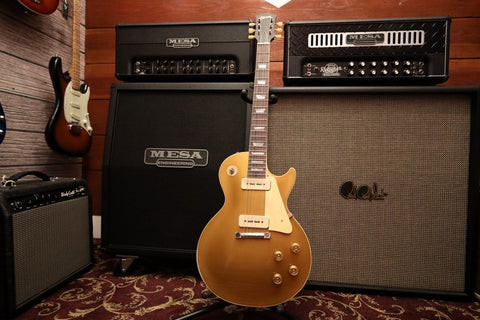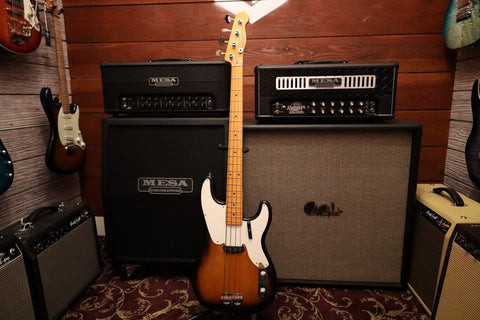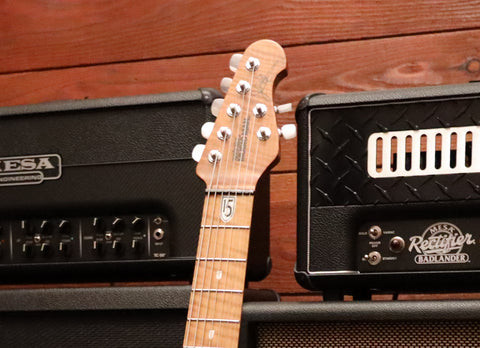The guitar, a timeless icon in the world of music, captivates millions with its diverse sounds and versatile nature. At the heart of its enchanting voice lie the strings, each a vibrating source of melodies and harmonies. When you think of a guitar, the first question that might strum through your mind is: How Many Strings Does A Guitar Have?
To truly understand the essence of this instrument, we must delve into the role these strings play in creating the rich tapestry of music we associate with guitars. Let’s embark on a detailed exploration of guitar strings, uncovering the standard configurations and the fascinating variations that exist.
Understanding the Guitar
A guitar is fundamentally a stringed instrument, and in its most common form, it features six strings. These strings, typically crafted from steel or nylon, are stretched across the guitar’s neck and body, each meticulously tuned to a specific pitch. When plucked or strummed, these strings resonate, producing the notes and chords that form the foundation of countless musical compositions.
While the six-string guitar is the most ubiquitous, the world of guitars is far from monolithic. Instruments with seven, eight, nine, twelve, or even more strings exist, each designed to cater to specific musical styles and sonic ambitions. These variations are not mere novelties; they are tools that expand the tonal palette and expressive capabilities of the guitar.
Exploring Different Guitar Types
To appreciate the nuances of string numbers, it’s essential to recognize the diverse landscape of guitar types. Each category boasts unique characteristics, influencing not only the number of strings but also the overall sound and playing style.
- Acoustic Guitars: Renowned for their natural, resonant sound, acoustic guitars rely on their hollow bodies to amplify string vibrations. They are staples in genres like folk, country, and pop.
- Electric Guitars: Designed for amplification, electric guitars utilize magnetic pickups to convert string vibrations into electrical signals. Their versatility makes them central to rock, blues, metal, and countless other genres.
- Classical Guitars: Characterized by their nylon strings and warm, mellow tone, classical guitars are the instruments of choice for classical, flamenco, and fingerstyle guitar music.
- Bass Guitars: Providing the rhythmic and harmonic foundation in ensembles, bass guitars are tuned to lower pitches and typically feature fewer strings than standard guitars.
Understanding these fundamental types sets the stage for exploring how string counts and musical applications intertwine.
 Acoustic guitar body and strings
Acoustic guitar body and strings
Electric Guitars: Wired for Variety
Electric guitars are typically strung with metal strings, a crucial element in their sound production. These strings interact with magnetic pickups, devices that capture string vibrations and convert them into electrical signals, ready for amplification. The solid body construction common in many electric guitars contributes to their sustain, allowing notes to ring out longer. Their association with genres like rock, metal, blues, and pop underscores their immense versatility.
Acoustic Guitars: Natural Resonance
Acoustic guitars, in contrast to their electric counterparts, utilize a hollow body design. This cavity acts as a natural amplifier, resonating with the vibrations of the strings to project sound outwards. This construction imbues acoustic guitars with a rich, organic tone that resonates beautifully in genres like folk, country, and pop. Acoustic guitars commonly feature six strings, but 12-string versions are also popular for a fuller, chorus-like sound.
Classical Guitars: The Warmth of Nylon
Classical guitars distinguish themselves with nylon strings. These strings produce a softer, warmer tone compared to the brighter sound of steel strings found on acoustic and electric guitars. This mellow timbre is particularly well-suited to the intricate fingerpicking styles of classical and flamenco music, offering a nuanced and expressive sonic palette.
 Close-up of a classical guitar headstock and nylon strings
Close-up of a classical guitar headstock and nylon strings
Bass Guitars: Laying Down the Low End
Bass guitars operate in a lower frequency range, typically featuring four strings tuned to produce deep, resonant bass tones. They are the rhythmic and harmonic backbone of many musical genres, providing the essential low-end foundation that underpins melodies and harmonies. While four strings are standard, five and six-string bass guitars are also used to extend the lower range and offer greater versatility.
The variety among guitar types highlights how string numbers are tailored to achieve specific sonic goals and musical roles. The number of strings is not arbitrary; it’s a fundamental aspect of each guitar’s design, contributing directly to its unique voice.
The Standard Six-String Guitar: A Timeless Configuration
For most people, the quintessential guitar is the six-string model. This configuration isn’t just a matter of tradition; it’s a testament to a design that has proven remarkably versatile and enduring across musical landscapes. The six-string guitar has become the norm because it strikes a perfect balance, offering a comprehensive range of notes suitable for a vast spectrum of musical styles. Let’s explore the reasons behind the six-string guitar’s enduring reign.
Examining the Layout of the Standard Six-String
The standard six-string guitar, often referred to as the Spanish guitar, is typically tuned to E, A, D, G, B, and E, progressing from the lowest (thickest) string to the highest (thinnest). This tuning, often called standard tuning, has become the bedrock of countless musical traditions. It provides a foundation capable of producing deep bass lines, rich melodies, and sparkling chords – all within a single instrument.
Why Six Strings Became the Norm
The six-string arrangement achieved prominence for several compelling reasons:
- Broad Sonic Spectrum: Six strings effectively cover the most frequently used pitches in Western music. This range allows guitarists to explore both lower and higher registers, making it suitable for lead melodies, rhythmic accompaniment, and even bass lines in solo settings.
- Balance of Complexity and Playability: The six-string guitar offers a sweet spot between musical complexity and ease of learning. It’s accessible enough for beginners to grasp fundamental techniques while providing seasoned players with ample scope for intricate musical expression.
- Genre Versatility and Universal Appeal: From rock, blues, and pop to classical, folk, and country, the six-string guitar has been embraced by a diverse array of musical genres. This widespread adoption underscores its universal appeal and adaptability.
In essence, the six-string guitar’s popularity stems from its exceptional musical utility and its profound cultural resonance. When we envision a guitar, it’s often this six-string archetype that comes to mind – an instrument finely tuned to our musical sensibilities and traditions.
Variations Beyond Six: Exploring String Number Diversity
While the six-string guitar holds a central position, the guitar family extends far beyond this standard. The world of guitars is rich with variations, each designed to meet the specialized needs of different musical genres and player preferences. As we venture into the realm of guitars with varying string numbers, it becomes clear that each configuration offers a distinctive sonic character and playing experience.
 An eight-string electric guitar
An eight-string electric guitar
Seven-String and Eight-String Guitars: Expanding the Low End
The seven-string guitar builds upon the standard six-string design by adding an extra lower string, typically tuned to B. This addition significantly expands the instrument’s tonal range, granting access to deeper bass notes. This extended low end has found particular favor in genres like metal and jazz, where musicians often seek a broader sonic palette and heavier, lower frequencies.
Eight-string guitars take this expansion even further, incorporating yet another low string, often tuned to F# or E. This substantial extended range becomes invaluable for crafting complex, layered musical textures and exploring sonic territories that demand a wider array of pitches, particularly in progressive metal and djent genres.
Twelve-String Guitars: A Chorus in One Instrument
For those seeking a richer, more resonant, and inherently chorus-like sound, the twelve-string guitar presents a compelling option. Instead of single strings, it employs pairs of strings, known as courses. Each course consists of two strings played together, either in unison or an octave apart. This pairing creates a naturally lush, shimmering effect, instantly recognizable in folk, rock, and various forms of popular music.
However, the doubled strings demand a more robust guitar construction to withstand the increased tension. Twelve-string guitars can also be more challenging to play initially due to the doubled strings requiring greater finger strength and precision.
Beyond Twelve Strings
While less common, guitars with even more strings exist, such as nine or ten-string models. These are often custom-built or niche instruments designed for highly specialized musical applications, pushing the boundaries of guitar tonality and playing technique.
Bass Guitars: Lower String Counts for Lower Frequencies
Bass guitars, designed to occupy the lower end of the sonic spectrum, typically feature fewer strings than standard guitars. The most common bass guitar is the four-string bass, tuned to E, A, D, and G, an octave lower than the four lowest strings of a standard guitar. Five and six-string bass guitars are also prevalent, extending the lower range and offering bassists greater harmonic and melodic possibilities.
Contrasting Stringed Instruments: Ukuleles and Banjos
To further illustrate how string numbers vary across instruments, consider the ukulele and banjo. The ukulele, known for its bright, cheerful tone, typically has four strings. Banjos, with their distinctive twang, commonly feature four, five, or six strings, depending on the type of banjo (e.g., tenor banjo, five-string banjo). These instruments, while distinct from guitars, highlight the diverse approaches to stringing instruments across different musical traditions.
The Impact of String Material and Construction on Tone
The strings themselves are not merely passive elements; they are active participants in shaping a guitar’s sonic identity. Understanding how different string materials and construction techniques influence sound production is crucial for guitarists and anyone seeking to appreciate the nuances of guitar tone. Let’s examine the acoustic properties that distinguish metal strings from nylon strings and the impact of string construction on the guitar’s voice.
Metal vs. Nylon: A Tale of Two Tonalities
The choice between metal and nylon strings is often dictated by musical genre and the desired sonic character. Metal strings, typically made from steel, nickel, or various alloys, produce a bright, articulate, and resonant tone. This brilliance makes them ideal for genres like rock, country, folk, and blues, where clarity and projection are paramount. The crispness of metal strings arises from their tendency to vibrate at higher frequencies, generating pronounced harmonics and a more sustained sound.
In contrast, nylon strings, predominantly found on classical and flamenco guitars, offer a warmer, mellower, and more rounded sound. Their softer material results in a more nuanced tonal palette, emphasizing rich overtones and a gentler attack. The lower tension of nylon strings also contributes to their distinctive, softer timbre, favored in classical music, flamenco, and fingerstyle guitar.
Material Science: Refining Acoustic Qualities
The science behind string materials extends beyond the basic dichotomy of metal and nylon. The specific alloys, coatings, and construction methods used in string manufacturing further refine the resulting sound. For instance, phosphor bronze strings, popular for acoustic guitars, deliver a deep, warm tone with a smooth feel, often sought after for a “woody” and organic sound. 80/20 bronze strings, another common acoustic string type, offer a brighter, more brilliant tone.
Coated strings, a technological advancement, not only extend string lifespan by resisting corrosion and buildup but also subtly influence tonal characteristics, often resulting in a slightly warmer or less bright tone initially that maintains its character for longer.
String gauge, or thickness, is another critical factor. Heavier gauge strings generally produce a fuller, louder sound with more sustain and deeper bass response. Lighter gauge strings, on the other hand, offer easier playability, brighter tone, and are often preferred for faster playing styles or by players with lighter touch.
In essence, the material and construction of guitar strings are fundamental components that define an instrument’s character and playability. Whether it’s the sharp attack of steel strings on an electric guitar or the gentle warmth of nylon strings on a classical guitar, string properties are integral to the art of guitar music.
- Metal strings: Bright, articulate, higher tension, versatile across genres requiring projection.
- Nylon strings: Warm, mellow, lower tension, ideal for classical, flamenco, and fingerstyle.
- Alloys and coatings: Fine-tune tonal qualities and string longevity.
- String gauge: Influences volume, sustain, playability, and tonal emphasis.
Guitar Genres and String Number Preferences
The world of guitar music is incredibly diverse, with different genres often exhibiting distinct preferences for guitar types and, consequently, string numbers. Across various musical styles, the number of strings on a guitar can be a significant factor in achieving the desired sound and playability.
Classical and Flamenco: Tradition and Six Nylon Strings
Classical and flamenco guitarists almost exclusively adhere to the traditional six-string nylon-string guitar. This configuration is deeply ingrained in the traditions of these genres, perfectly suited to the intricate melodies, complex fingerpicking techniques, and nuanced expression that define classical and flamenco guitar music.
Rock and Metal: Embracing Extended Ranges
In rock and metal, guitarists frequently venture beyond the conventional six strings, especially in heavier subgenres. Seven-string guitars, popularized by artists like Steve Vai and bands like Korn, provide an extended lower range, crucial for achieving heavier, more aggressive riffs and solos. Eight-string guitars, used by musicians like Tosin Abasi and Meshuggah, further expand this range, becoming essential tools in progressive metal, djent, and other genres pushing sonic boundaries. Six-string guitars, however, remain a mainstay in rock and metal, valued for their versatility and punch.
Jazz: The Versatile Six-String
Jazz guitarists, known for their sophisticated chord voicings, improvisational prowess, and nuanced tones, typically favor six-string guitars. Legendary jazz guitarists like Wes Montgomery, Joe Pass, and George Benson built their groundbreaking styles on six-string instruments, showcasing the versatility and expressive capabilities inherent in this configuration.
Country and Bluegrass: The Twang of Steel Six-Strings
Country and bluegrass genres have a strong affinity for the bright, twangy sound of six-string steel-string acoustic guitars. Iconic figures like Johnny Cash, Chet Atkins, and Doc Watson immortalized the six-string acoustic guitar sound within these genres, establishing it as a core element of their sonic landscapes.
Blues: Six Strings and Beyond
Blues guitarists primarily use six-string guitars, both acoustic and electric. The six-string guitar is fundamental to blues traditions, from the Delta blues to electric blues rock. However, some blues players, particularly in more modern or experimental blues styles, might occasionally explore seven-string guitars or alternate tunings to expand their sonic palette. Slide guitar, a prominent blues technique, is almost exclusively played on six-string guitars, often in open tunings.
Extended-Range Guitars: Pushing Boundaries in Progressive Music
Extended-range guitars, encompassing seven, eight, and even more strings, are increasingly popular in experimental, progressive, and technically demanding music genres. These guitars offer a broader sonic palette, enabling musicians to create complex arrangements, explore lower registers, and push the boundaries of guitar-based music.
- Seven-String Guitars: Favored in metal, djent, and progressive music requiring heavier tones and extended lower registers.
- Twelve-String Guitars: Common in folk, rock, and pop for their rich, chorus-like sound and fuller harmonic texture.
- Extended Range Bass Guitars (5, 6+ strings): Widely used in jazz fusion, progressive rock, metal, and other genres demanding greater bass range and versatility.
Understanding these genre-specific preferences can guide players in selecting the right number of strings for their musical aspirations. The guitar’s adaptability across genres is a testament to its enduring versatility and the boundless creative possibilities it offers musicians.
Conclusion: Embracing the Strings of Possibility
Our journey through the diverse world of guitars has revealed that the number of strings is far from a fixed attribute. It’s a dynamic element, shaped by historical evolution, playing styles, musical genres, and the ever-evolving quest for new sonic frontiers. From the standard six strings of the ubiquitous acoustic guitar to the extended ranges of seven, eight, and twelve-string models, each configuration presents a unique sonic landscape and set of expressive possibilities.
The guitar’s remarkable adaptability across genres is undeniable. This iconic instrument thrives in the hands of classical virtuosos, electrifying rock stars, improvisational jazz masters, and soulful folk musicians alike. Each guitar type, with its specific string arrangement and material, contributes a distinct flavor to the music it creates, showcasing the instrument’s boundless versatility.
Now, it’s your turn to explore the strings of possibility! Whether you’re a novice taking your first steps into the world of music or a seasoned player seeking to broaden your horizons, experimenting with different guitars and string numbers can unlock exciting new sounds, techniques, and creative avenues.
- Feeling Inspired? Pick up a guitar, any guitar, and let its strings guide you on a musical adventure.
- Seeking Deeper Knowledge? Dive into our comprehensive guide on guitar maintenance to master the art of string changing and ensure your instrument always sings its best.
Continue Your Guitar Journey
Explore our Additional Resources Section for in-depth articles on various guitar types, string materials, and tuning techniques. Expand your musical vocabulary with our detailed glossary of guitar terms. Armed with newfound knowledge and the right strings beneath your fingers, the next chapter of your guitar story awaits.
Keep exploring, stay tuned, and let the strings of the guitar resonate with your musical spirit!
Share It:
[

